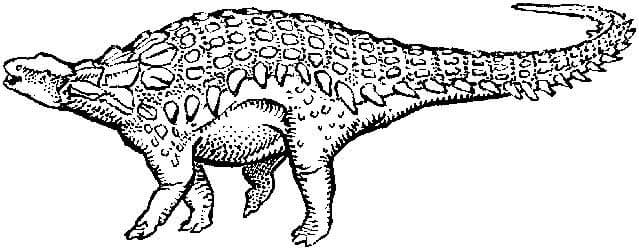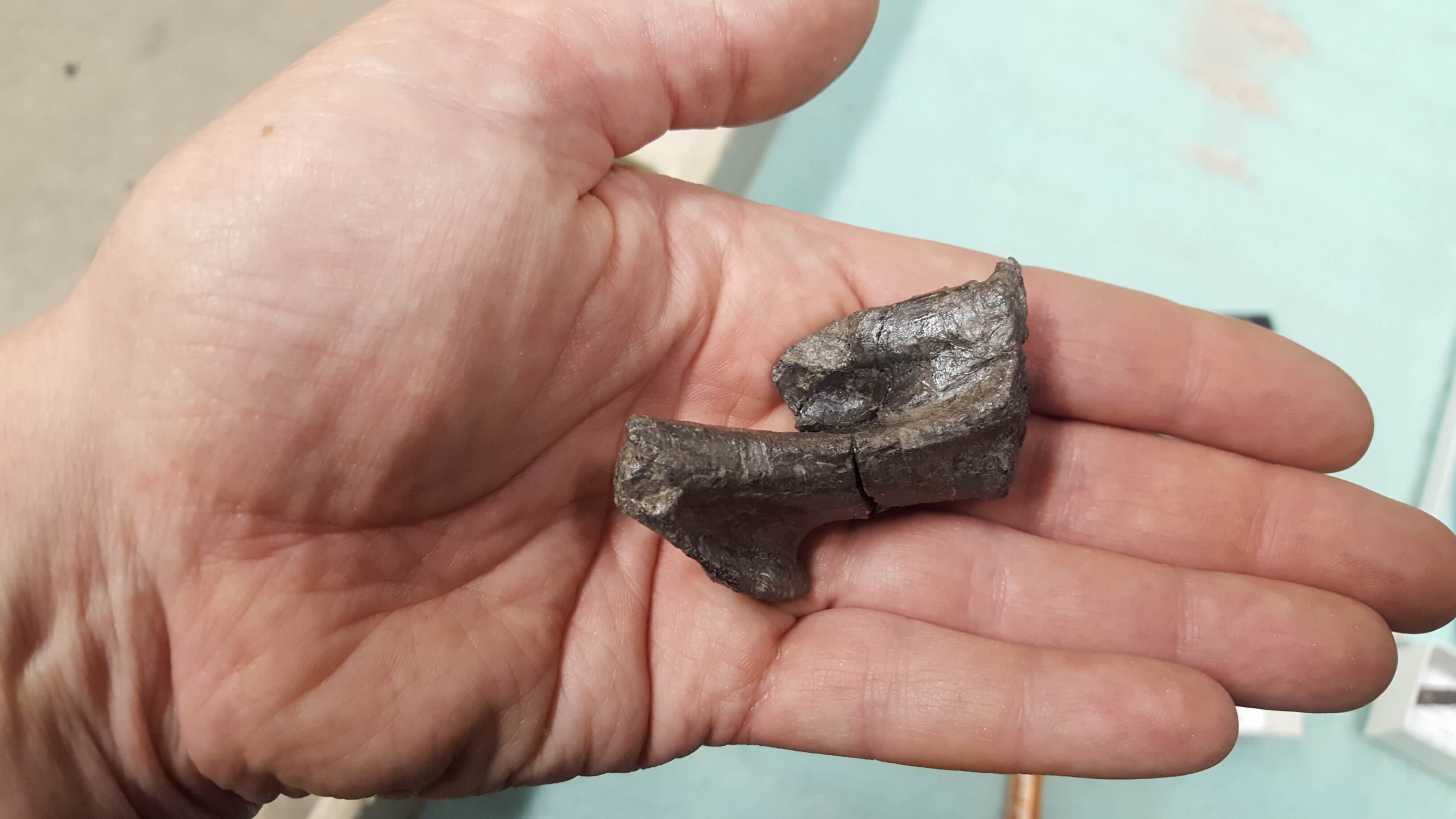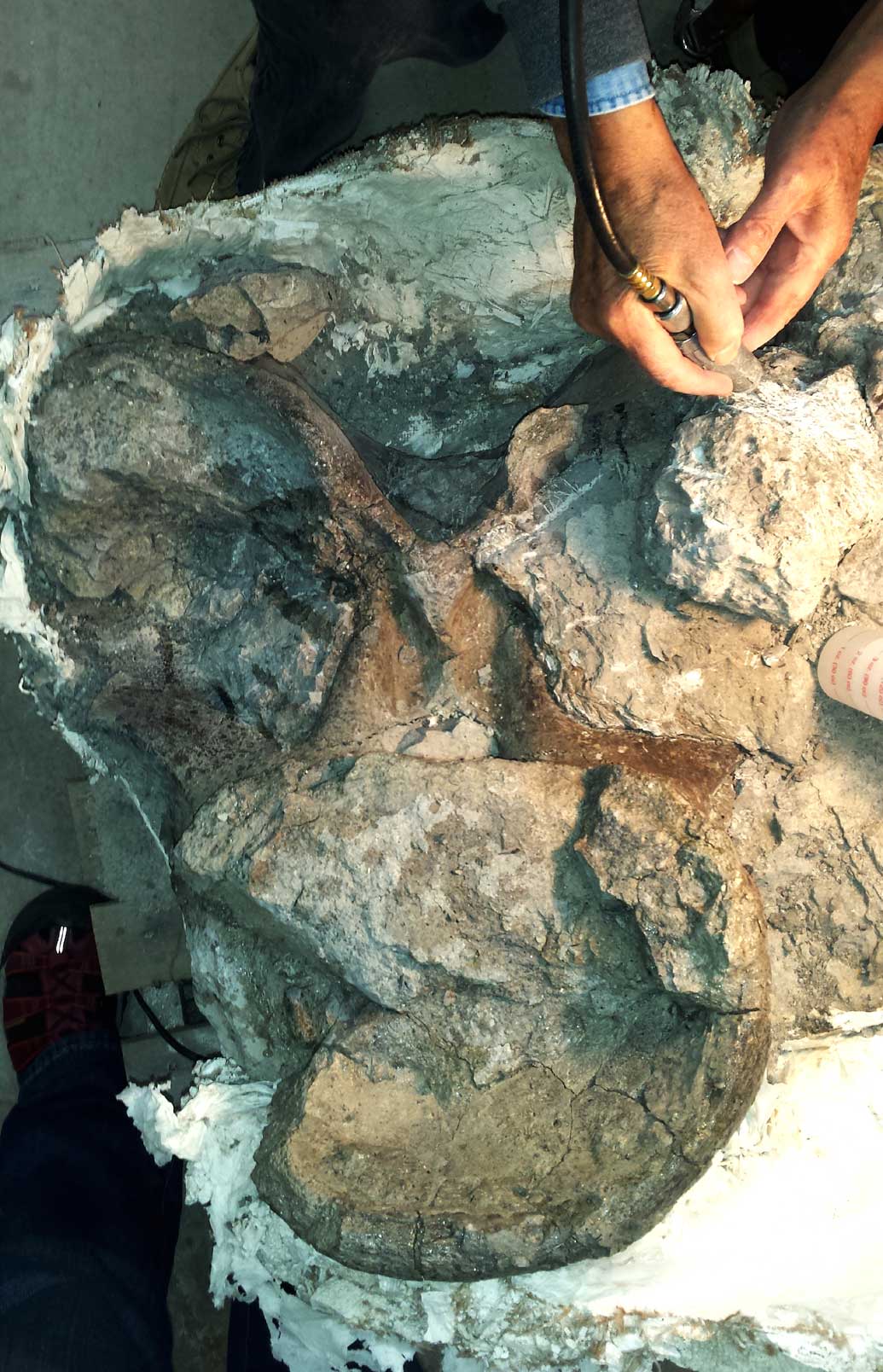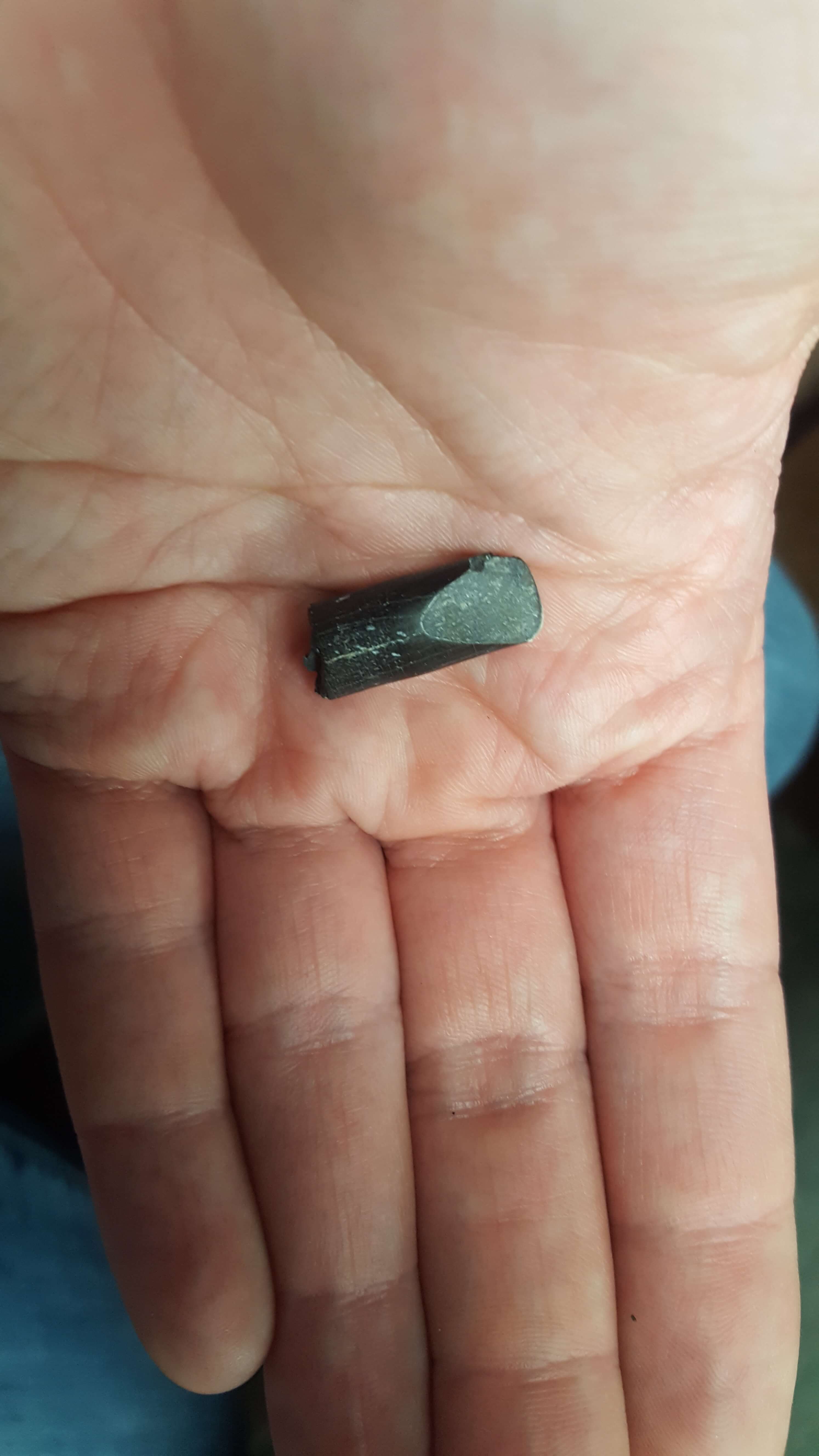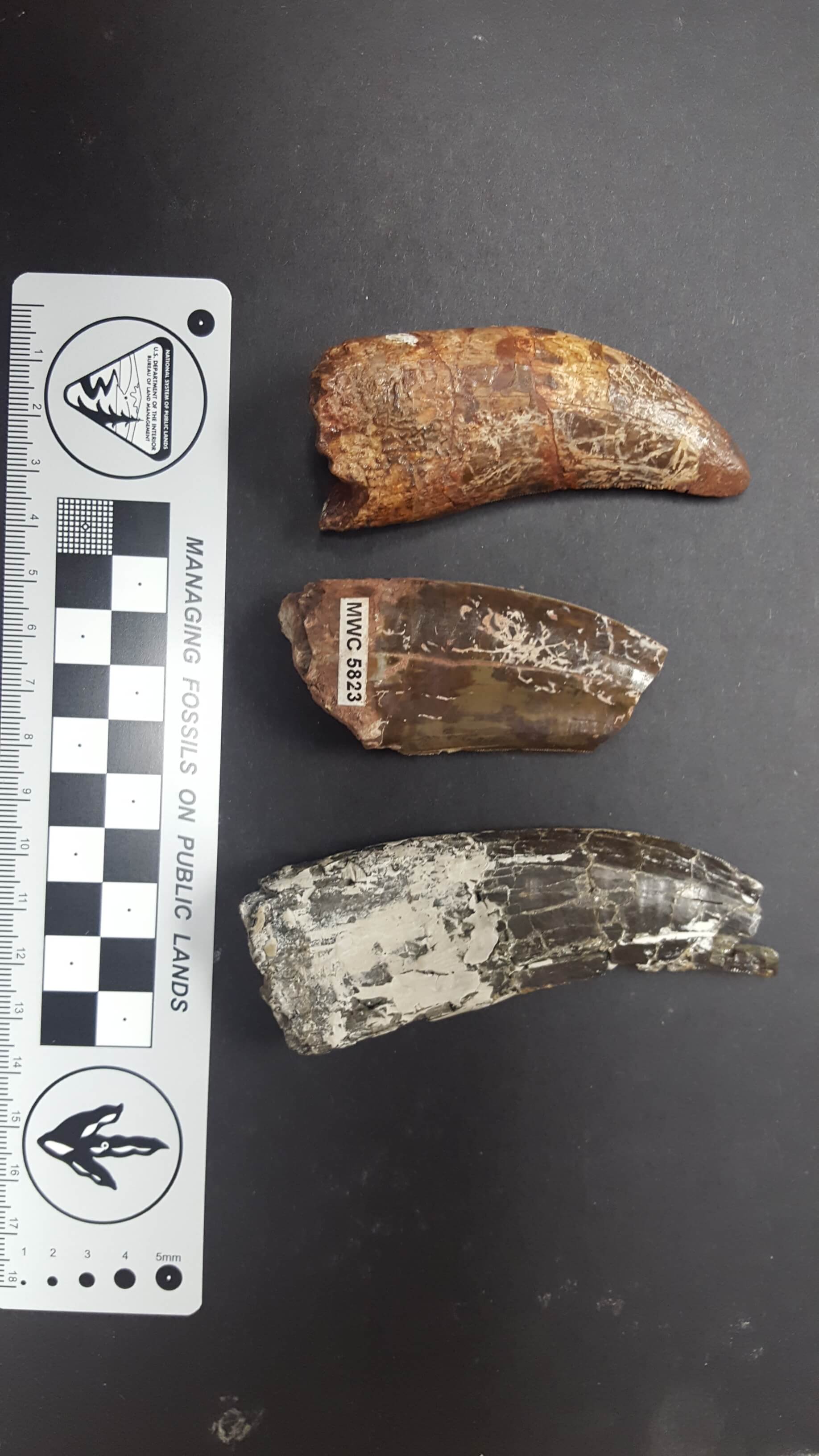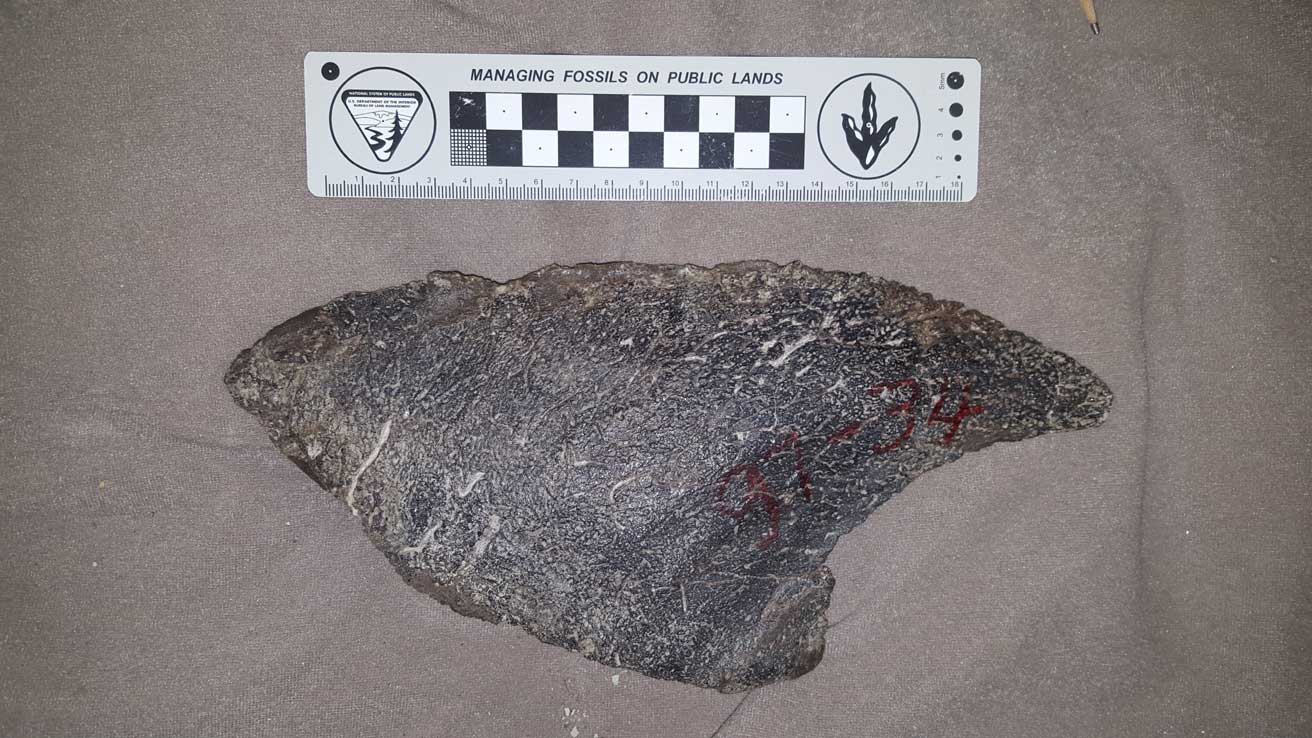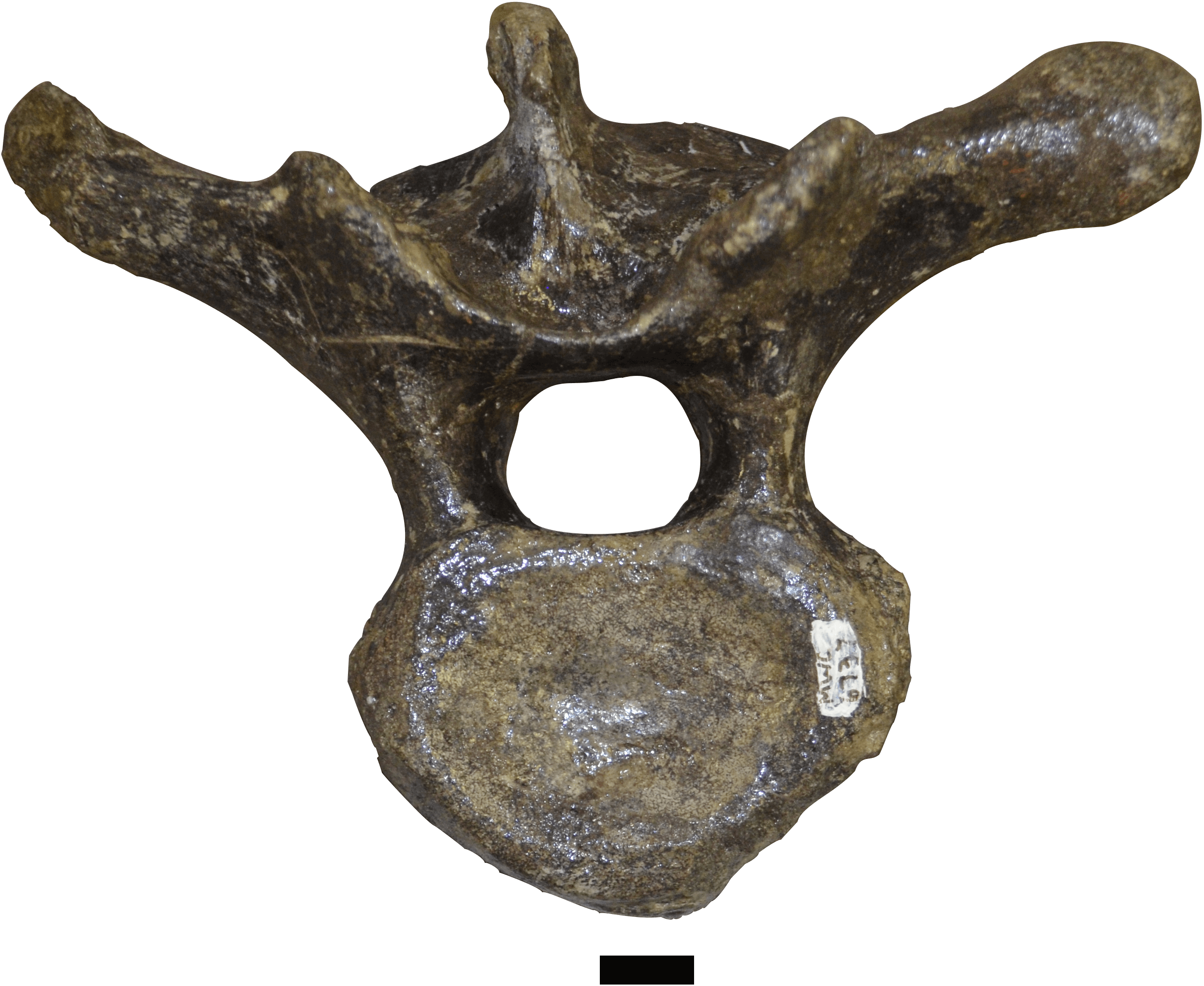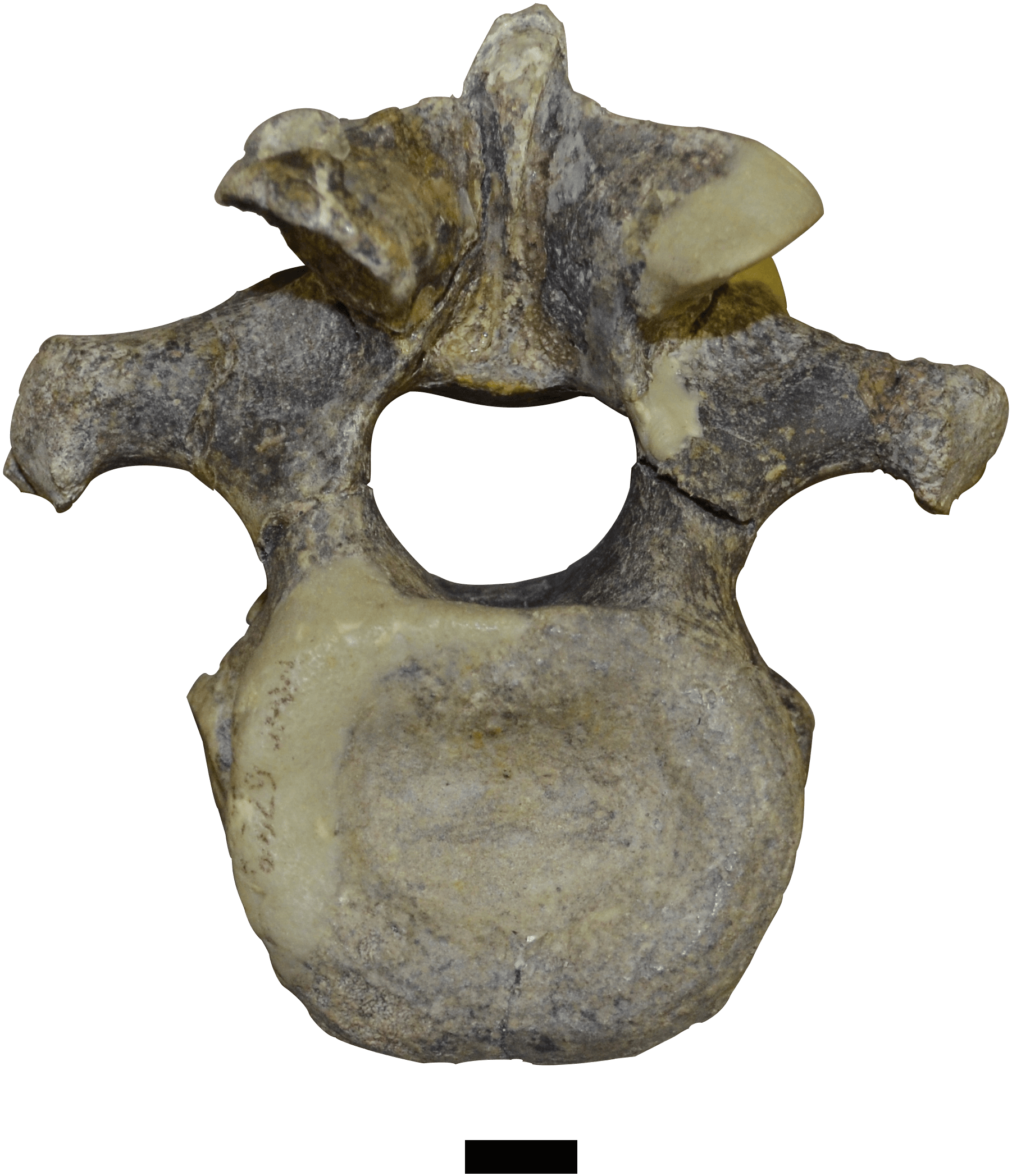Western Colorado’s Paleontological Heritage
152 million years ago, the Grand Valley in Mesa County looked very different from today. The Rocky Mountains would not yet have risen in the east. The rocks that make up the Book Cliffs, Grand Mesa, and most of Colorado National Monument had not even been formed! Instead of a river flowing west across the nearly-mile-high Colorado Plateau, broad powerful streams crossed a vast floodplain, heading north to a large bay in what is now Nevada, Idaho, and Montana. Instead of desert sage and riverside Cottonwood trees, primitive pine trees dotted the landscape. Pools, ponds, and mudholes teemed with life, and cycads dotted the prairies. Seasonal rains would cross the landscape, while other times the land went dry and life in this ancient landscape had to search for or conserve what little water was available.
How do we know all this? The rocks preserved around the Grand Valley help geologists and paleontologists unravel the stories hidden within them. Fossils are found throughout the Grand Valley in the Morrison Formation, a colorful layer of clay and sand rocks that dates from the end of the Jurassic Period. Some of these fossils preserve only a tantalizing fragment of the past, while other places preserve detailed snapshots of the environment. One such place is the Mygatt-Moore Quarry, located in Rabbit Valley in far western Colorado.
Discovered in 1981 by two local couples, Peter and Marilyn Mygatt and John (JD) and Vanetta Moore, this site has provided paleontologists with an unparalleled look at what life was like in the Late Jurassic Period. To learn more, click on an animal in the heading image or follow the links to the right.

Allosaurus
Allosaurus is the most famous and most common meat-eating dinosaur from the Morrison Formation. Originally named for scrappy remains from the Front Range, Allosaurus became widely known as one of the best-represented theropod dinosaurs after a huge concentration of their remains were discovered in central Utah. The discovery and ongoing excavation of the Cleveland-Lloyd Quarry has allowed paleontologists to understand Allosaurus better than most any other carnivorous dinosaur known to date! In addition to finds here in the American West, Allosaurus is know from fossils found in Portugal and possibly in Africa.
Allosaurus had powerful clawed forelimbs that it likely used to capture and subdue its prey. Its teeth were sharp and blade-like, though not overly large, throughout most of the jaw. This made them perfect for ripping and slashing through the hides and muscles of their prey. The teeth at the front of the jaw were more robust, possibly for ripping pieces of flesh off of bones. We see evidence of this behavior in fossil bones from our Mygatt-Moore Quarry (jointly managed with the Bureau of Land Management), where tooth marks on limb bones and vertebrae bear witness to the carnivorous behavior of Allosaurus. Also of note are the attachments for neck muscles on the back of the skull of Allosaurus. These attachments are placed differently than in other carnivorous dinosaurs, allowing Allosaurus to gape its jaws at almost 180 degrees and slam its head down like a hatchet on its prey. This feeding method is similar to what we see today in dinosaurs such as hawks and eagles eating.
At the Mygatt-Moore Quarry in western Mesa County, Allosaurus is the most commonly found dinosaur, even more so than plant-eating dinosaurs like Apatosaurus. We have excavated the remains of at least six Allosaurus, including one juvenile. More remains continue to be found every year!
Allosaurus facts
| Length | Weight | Age | Diet |
| Up to 30 feet in length | Up to 1.5 tons | 152 million years ago; Late Jurassic Period | Other dinosaurs. |

Apatosaurus
Apatosaurus is one of the most iconic dinosaurs to have been discovered. It also has perhaps one of the most storied histories of any prehistoric animal. For many years there were two similar dinosaurs that were recognized by the public; Apatosaurus and Brontosaurus. Brontosaurus was featured in many popular stories and books about dinosaurs, especially for children, and became very well known. In 1901, however, right here in Colorado’s Grand Valley the story of Apatosaurus and Brontosaurus took a different turn. Paleontologist Elmer Riggs from Chicago’s Field Museum was hunting for dinosaurs. The year prior he had excavated the first ever Brachiosaurus skeleton from what is now called Riggs Hill, so he was aware of the fossil resources of the area. Upon finding a skeleton going into a cliff at what is now Dinosaur Hill in Fruita, Riggs realized that he had found something unique. After boxing up the animal’s remains, floating them across the river to the rail depot in Fruita, and shipping them back to Chicago, Riggs finally published his findings. Apatosaurus and Brontosaurus were not different animals at all, but instead were the same genus. Since Apatosaurus had been named first that name took priority and the name Brontosaurus was relegated to history books.
That is not the end of the story, however! In 2015 paleontologist Emanuel Tschopp and colleagues used new technology to analyze fossils that had been classified as Apatosaurus, along with some of its relatives. Using technology not available to Riggs, Tschopp and his co-authors found that differences in the bones of Apatosaurus and other sauropods meant that Brontosaurus was distinct! Scientists had mistakenly thought it was not a different animal since 1903.
At the Mygatt-Moore Quarry in western Mesa County, Apatosaurus louisae is the most commonly found herbivorous (plant-eating) dinosaur. We have excavated the remains of at least five Apatosaurus, including one sub-adult and one juvenile. More remains continue to be found every year!
Apatosaurus facts
| Length | Weight | Age | Diet |
| Up to 80 feet in length | Up to 17 tons | 152 million years ago; Late Jurassic Period | Plants; especially low-growing ferns, horsetails, and other groundcover. |
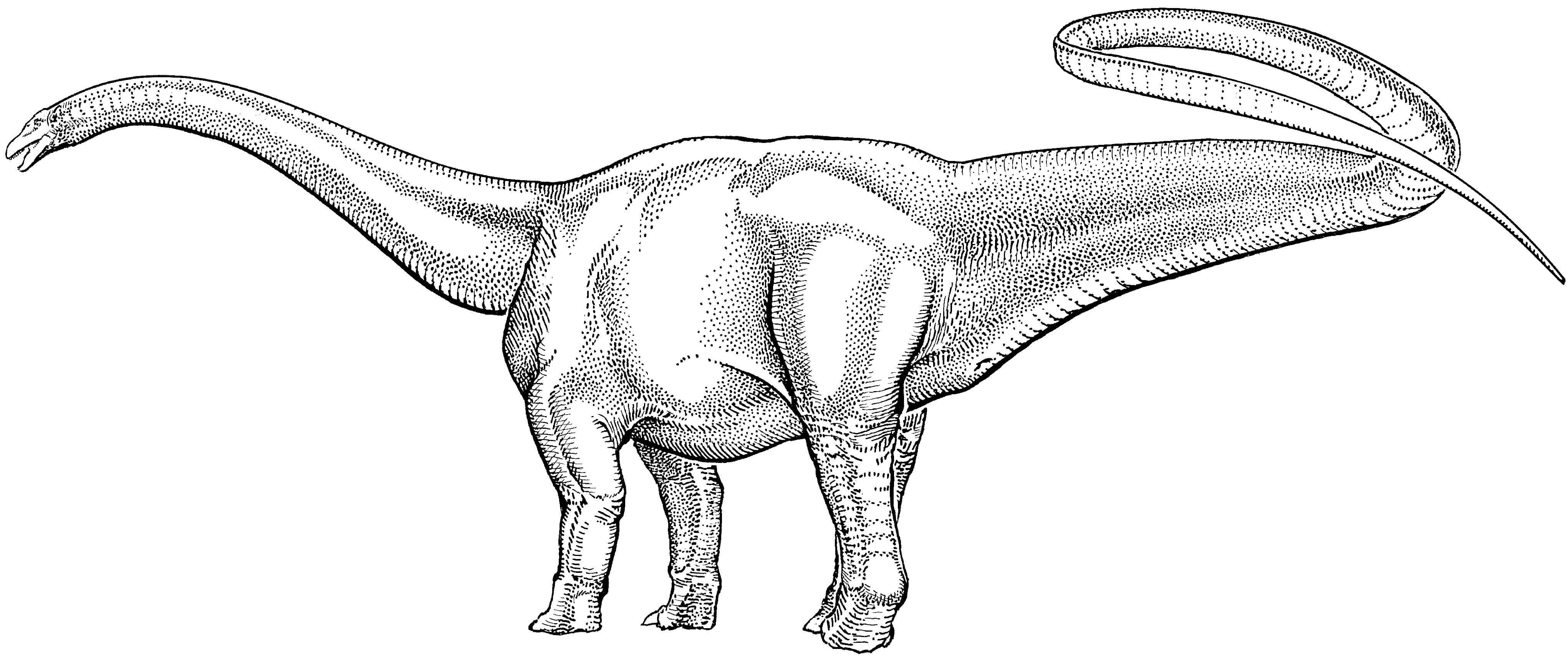
Camarasaurus
Camarasaurus is the most common sauropod dinosaur from the Morrison Formation, a Late Jurassic deposit of floodplain sediment, river channels, and dry salt pans. Camarsaurus means “chambered lizard,” which is a reference to the pneumatic cavities (or chambers) in its spine. These hollows were likely connected to its respiratory system in the same manner as the air sacs of birds and crocodiles are today.
Camarasaurus was in some ways the prototypical sauropod. Large without being a true giant (most specimens are around 50 feet in length), having a long neck and tail, and with a rather generalized sauropod head, Camarasaurus sometimes is used by paleontologists as a stand-in for what earlier sauropods may have looked like. Camarasaurus had a deep skull and jaw, with broad spoon-shaped teeth that would have been good for stripping branches, plucking tough vegetation from the ground, and plucking conifer cones.
At the Mygatt-Moore Quarry in western Mesa County, only a handful of Camarasaurus fossils have been found. This is unlike most other fossil sites in the Morrison Formation across the American West, where Camarasaurus is plentiful. In fact, just above the Mygatt-Moore Quarry on the Trail Through Time, you can see the remains of a Camarasaurus preserved in a thick sandstone deposited by a river channel. Does the relative rarity of Camarasaurus at Mygatt-Moore indicate that they preferred different habitats than what was present there during the Late Jurassic? Or does it simply mean that the Mygatt-Moore Quarry was deposited at a time when very few Camarasaurus happened to be in the area? Ongoing fieldwork at the quarry may reveal the answer!
Camarasaurus facts
| Length | Weight | Age | Diet |
| Up to 60 feet in length | 45 tons | 152 million years ago; Late Jurassic Period | Plants; it was a generalist, so it likely was able to eat whatever sort of plants happened to be available. |
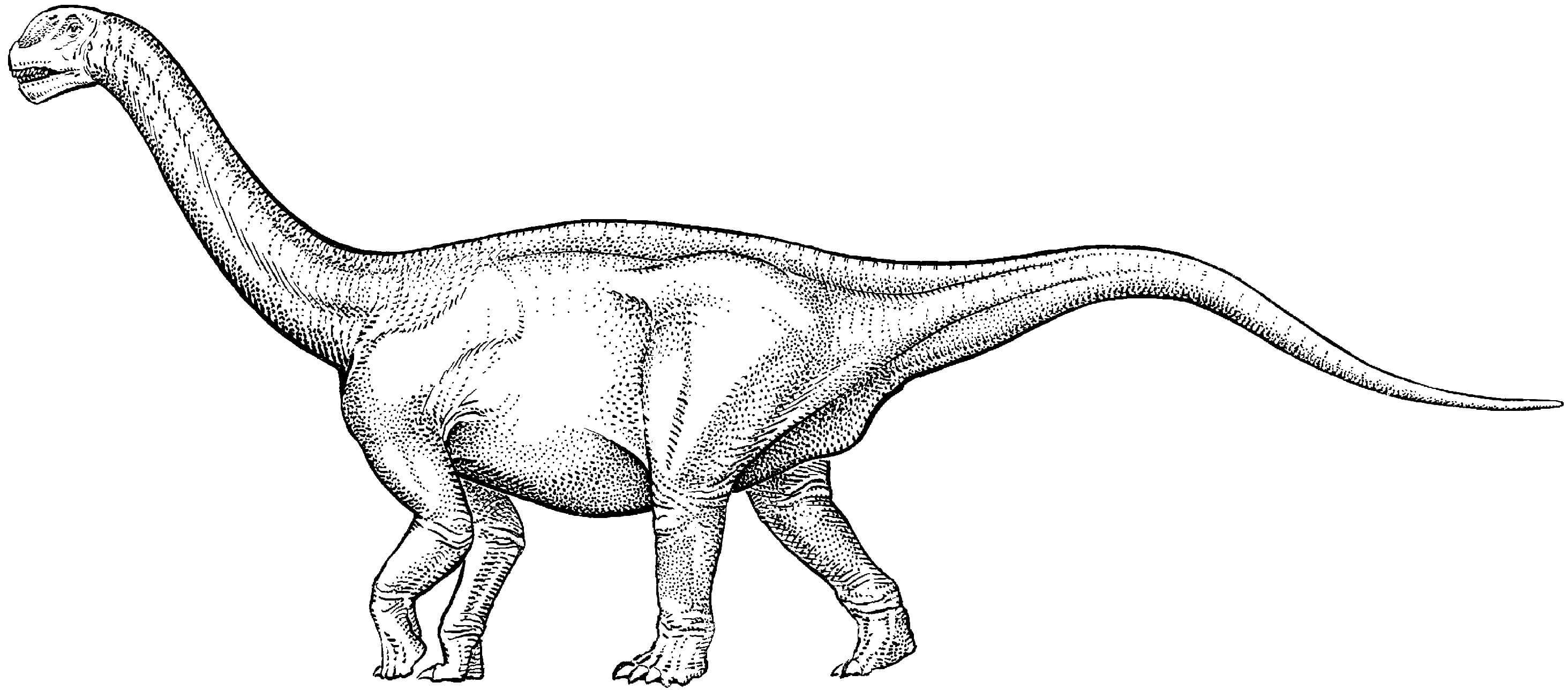
Ceratosaurus
Ceratosaurus is a genus of predatory dinosaurs (theropods) found in the Grand Valley. Ceratosaurus is smaller and less common than the more famous theropod Allosaurus. Unlike it’s distant cousin, Ceratosaurus was more primitive. It had much larger teeth, compared to skull size, and had four fingers on the hand, instead of three.
Bones of Ceratosaurus were the first dinosaur fossils to be cataloged into the paleontological collections at the Museums of Western Colorado. The skull and partial skeleton were discovered in the Fruita Paleontological Area (FPA) by curator of paleontology Lance Eriksen in 1976. Prior to the protection of the paleontological resources in the FPA, vandalism and theft of fossils was increasing. It was important to protect these fossils, as this was only the second specimen of Ceratosaurus ever found. At the time, it was thought that these bones belonged to a new species: Ceratosaurusmagnicornis. Although today the number of Ceratosaurus species is currently debated, these fossils remain very important as they helped usher in the movement to establish a protected BLM area for the FPA in 1977. Twenty years later, in 1997, Ceratosaurus was named the official dinosaur of the City of Fruita.

Mymoorapelta
Mymoorapelta is one of the rarest dinosaurs from the Mygatt-Moore Quarry, with only the remains of two individuals being discovered so far. Related to other famous dinosaurs like Ankylosaurus, Mymoorapelta is the oldest ankylosaur discovered anywhere in the world! Named in 1994 by scientists from Colorado and Utah, Mymoorapelta changed what scientists thought they knew about armored dinosaurs. Previous to their discovery it had been thought that the only armored dinosaurs in the Late Jurassic of North America were things like Stegosaurus and its kin. With the discovery of Mymoorapelta, our understanding of armored dinosaur relationships and evolution had to change. It became clear that armored dinosaurs had split into stegosaurs and ankylosaurs long before the previously understood date.
Mymoorapelta’s skull is incompletely preserved, but based on its relatives we can assume it had a short, broad muzzle with a beak and small, leaf-shaped teeth in its mouth. The picture you see here represents a mounted skeletal cast with a reasonable interpretation of where its armor was located. Since we have yet to find a fully articulated specimen of Mymoorapelta, we can only use inference based on its relatives to reassemble the armor into life positions.
At the Mygatt-Moore Quarry in western Mesa County, Mymoorapelta represents 19% of all the dinosaur bones found. We have excavated the remains of at least two Mymoorapelta and hope to recover even more!
Mymoorapelta facts
| Length | Weight | Age | Diet |
| Up to 15 feet in length | 1,000 pounds | 152 million years ago; Late Jurassic Period | Plants, especially low-growing ferns and horsetails. |
